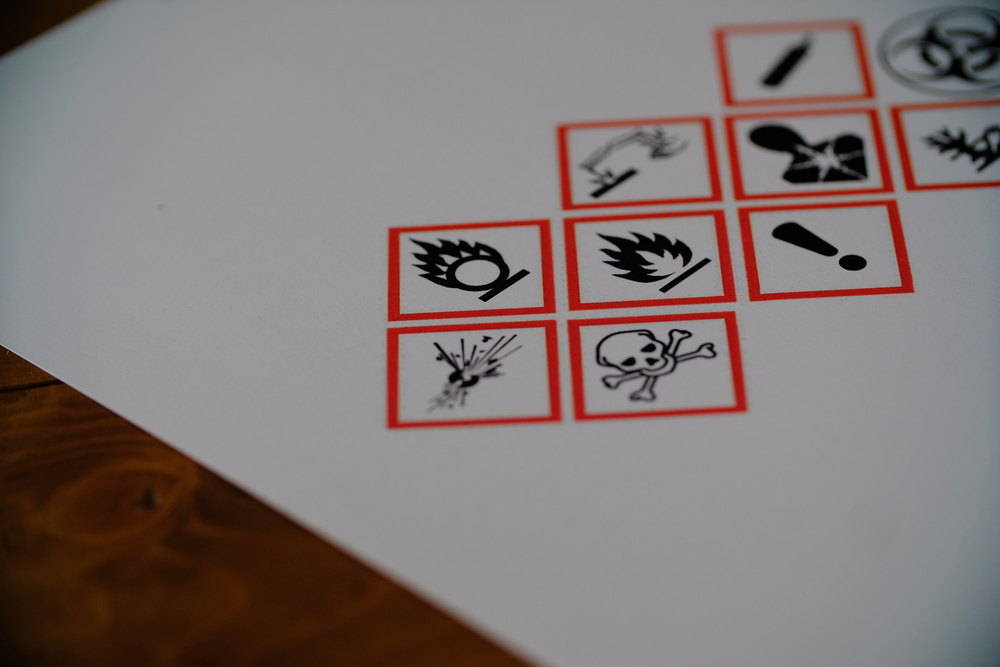What Does COSHH Stand For?

- What is COSHH?
- What does COSHH stand for in health and safety?
- What does COSHH cover?
- Employer responsibilities under COSHH
- Employee responsibilities under COSHH
- COSHH symbols and their meaning
What is COSHH?
COSHH is a set of regulations or guidelines that help protect employees who work in an industry where they could be exposed to potentially harmful substances. The COSHH regulations have been in place for over 25 years and ensure all employers control exposure to hazardous substances that could potentially be dangerous to employee health.
COSHH is used in industries like construction, hairdressing, or cleaning companies, where exposure to paint, bleach or dust could potentially be a risk.
What does COSHH stand for in health and safety?
COSHH is a set of regulations introduced to protect people against exposure to harmful substances at work. COSHH in health and safety, stands for ‘Control of Substances Hazardous to Health’.
These rules are put in place at workplaces where people are using specific substances and materials that could be damaging to their health. A breach of COSHH regulations is a criminal offence and punishable with an unlimited fine.
What does COSHH cover?
COSHH covers any hazardous substance that could be potentially harmful to health, including:
- Chemicals
- Products containing chemicals
- Fumes
- Dust
- Vapours
- Mist
- Nanotechnology
- Gases and asphyxiating gases
- Biological agents or germs
- Germs that can cause disease
COSHH does not cover lead, asbestos, and radioactive substances because these have their own regulations.
Employer responsibilities under COSHH
As an employer, you have certain COSHH responsibilities to ensure all your employees are safe at work. You can reduce or prevent exposure to hazardous substances by:
- Implementing control measures to protect workers
- Preventing or controlling exposure to hazardous substances
- Providing employees with health and safety information and training
- Providing employees with the correct protective equipment
- Ensuring that control measures are maintained and kept in working order
- Planning and implementing emergency procedures
- Keeping employees under suitable health surveillance
- Carrying out a COSHH risk assessment
COSHH risk assessment
A COSHH risk assessment follows the same process as a standard risk assessment, but you’ll be focusing on the use of hazardous substances. Here’s a breakdown of the five main steps you should follow:
- Identify the hazards
- Decide who might be harmed and how
- Evaluate the risks and decide on precautions
- Record your findings and implement changes
- Review and constantly update your assessment
You can concentrate on the hazards and risks of dangerous substances in the workplace by asking yourself the following questions:
- Where is the potential for exposure to dangerous substances?
- In what way are these substances harmful to health?
- What jobs or tasks could lead to exposure?
- Are there any areas of concern?
COSHH risk assessments shouldn’t be carried out once and forgotten about. Remaining vigilant and alert to the dangers of the workplace will help you minimise the risk posed by hazardous substances.
Employee responsibilities under COSHH
You also have COSHH responsibilities to follow as an employee. These include:
- Using the control measures and facilities provided by the employer
- Ensuring all equipment is returned and stored properly
- Reporting defects and insufficiencies in control measures
- Wearing and storing personal protective equipment (PPE)
- Removing PPE that could cause contamination before eating or drinking
- Making proper use of washing, showering and bathing facilities
- Maintaining a high level of personal hygiene
- Complying with information, instructions and training provided
COSHH symbols and their meaning
There are nine primary hazard symbols you should look out for when following COSHH regulations. We explain each of them and detail their symbol below:
Explosive (An object exploding)
Flammable (A flame)
Compressed gas (A gas cylinder)
Dangerous to the environment (A dead fish and tree): Chemicals that may present an immediate or delayed danger to aspects of the environment.
Toxic (A skill and crossbones): Chemicals that cause damage to health. A T+ in the top-left corner signals chemicals that cause damage to health at very low levels.
Oxidising (A circle covered in flames): Chemicals and preparations that react exothermically with other chemicals. Common oxidising agents are oxygen, hydrogen peroxide and halogens.
Corrosive (Liquid pouring from a tube): Substances that can damage or destroy other substances they come into contact with
Long-term health hazards (A white spark working through a human silhouette): Signals the presence of cancer-causing, carcinogenic agents or substances with respiratory, reproductive or organ toxicity that cause damage over time.
Caution (An exclamation point): Less hazardous substances that ay not pose an immediate or severe threat to health but should be handled cautiously.
This article covers everything you need to know about COSHH regulations and how to follow them correctly. COSHH is put in place to ensure everyone in the workplace is safe and protected against long-term health risks, whether they’re working at a desk, outdoors or in a factory.









